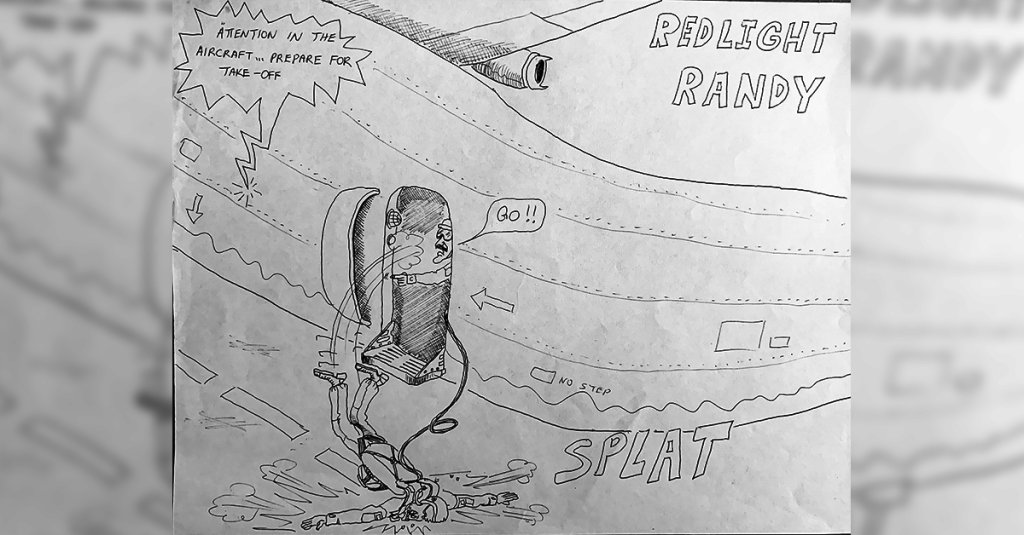

Master Sergeant George Hand US Army (ret) was a member of the 1st Special Forces Operational Detachment-Delta, The Delta Force. He is a now a master photographer, cartoonist and storyteller.
There is a saying among the airborne forces (words to the effect): “The sky, even more so than the land or the sea, is terribly unforgiving to even the slightest mistake.”
I have been in ground combat units, airborne units both low and high-altitude operational in nature, and have extensive experience in both maritime undersea and surface operations. I agree that airborne operations are likely more dangerous than those maritime, but I insist that the land is by far the safest of all; in fact, I’m conducting a fairly safe land operation right this very minute!
Combat diving puts one in many claustrophobic situations. I happen to be mildly claustrophobic; I think a great percentage of us are, but I also happen to be clinically horrified of heights to the point of near incapacitation. For me, therefore, parachute training was the most stressful. That notwithstanding, I have ~800 parachute jumps to boast of.
While I know of many deaths, near deaths, and injuries from parachute operations (mostly broken limbs from landing and spinal injuries from hard parachute openings), I also have personal experience with two fatalities just in the basic training course for Special Forces underwater operations. In both cases the deaths were attributed to heart attacks. I should mention that the Army’s diving school is one of the most stressful, mentally and physically, in the world.

One of the concerns in airborne operations are early or late exits from the jump aircraft. As you may know, paratroopers try to land in a pre-designated area of land know as a Drop Zone (DZ) that is largely devoid of structures and obstacles like trees and communications lines. Therefore urban areas are avoided and deserts make for great DZs indeed. High altitude jumpers with highly maneuverable parachutes fancy the motto: “The whole world is a Drop Zone.”
In a jump aircraft, the pilot turns over control of the jump to the Jump Master in charge by way of a simple pair of lights located at the jump doors; one is red and the other green. Minutes from the DZ, the pilot will illuminate the red light indicating “no jump”. Once the pilot feels he is safely over the DZ, he will illuminate the green light indicating “safe for jump.”

(Sweet shot of a paratrooper just out the jump door with the green “Go” light illuminated.)
Paratroopers exiting on a red light is considered a major safety violation and is not tolerated across the community. Each incident warrants some measure of investigation to determine fault and safety conditions at the time. Such was the case of Red Light Randy.
Delta does very few if any low-level static lines drops, favoring the greater potential of drops from altitudes of 12,500 feet Above Ground Level (AGL) and above. Red Light Randy had a mission for which a low-level drop was needed, so he set out for a couple of rehearsal jumps prior to the mission.
The practice jumps went well, but on the night of the actual mission, the pilot failed to put the red light to green once over the DZ. Randy had positive visual recognition of his DZ reception party below, but had no jump authority. Frustrated at the sight of his DZ wasting away below him, he stuffed his team out the door with a frustrated enthusiasm. At a point along the exit the green light finally came on.

(A low-level drop has a much greater penchant to keep men less dispersed ever ground
than a high-level drop.)
There was never a decent explanation given by the pilot for the late green light that caused Randy, the last to exit, to come down in some modest scrub past the far edge of the drop zone. There were no injuries or loss of equipment, and Randy and his men enjoyed a mission success for the night.
The Air Force reported the “incident” as an early exit on a red light, but the swift and efficient investigation that ensued determined that the pilot gave a late green, threatening a separation in Randy’s team. In combat it is not the prerogative to circle back and drop the rest of the team, so inevitably the loss of so many men of Randy’s team would have monumentally jeopardized mission success.
So the early red light incident was over… or was it? The “potential ball-breaking” alarm sounded. The details of the event were rocketed off to me, and I got to work straight away producing the feature cartoon:
The drop aircraft is depicted still on departure field runway with Randy announcing the command to jump, The first man exits only to splat face-down on the tarmac. Early exit on red for Red Light Randy!
